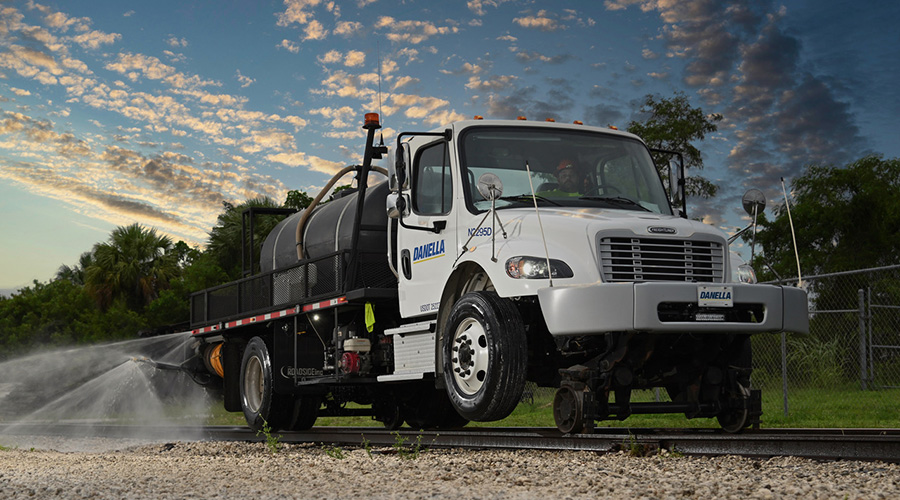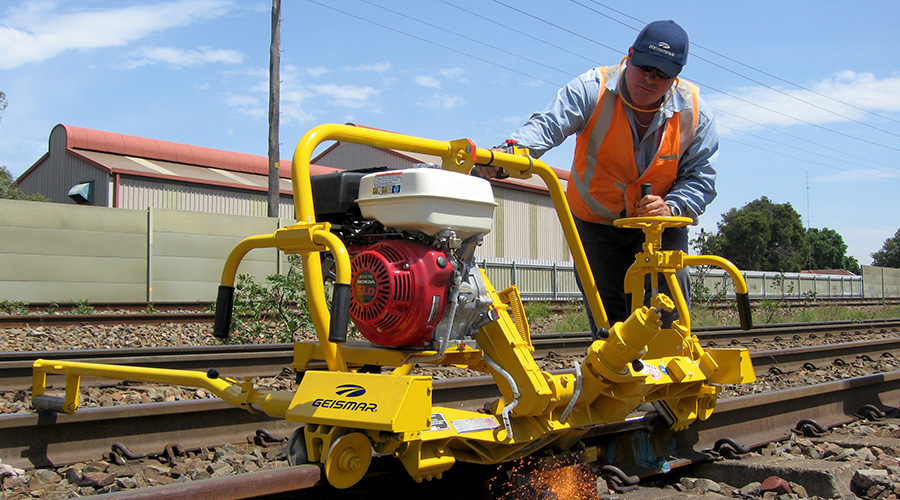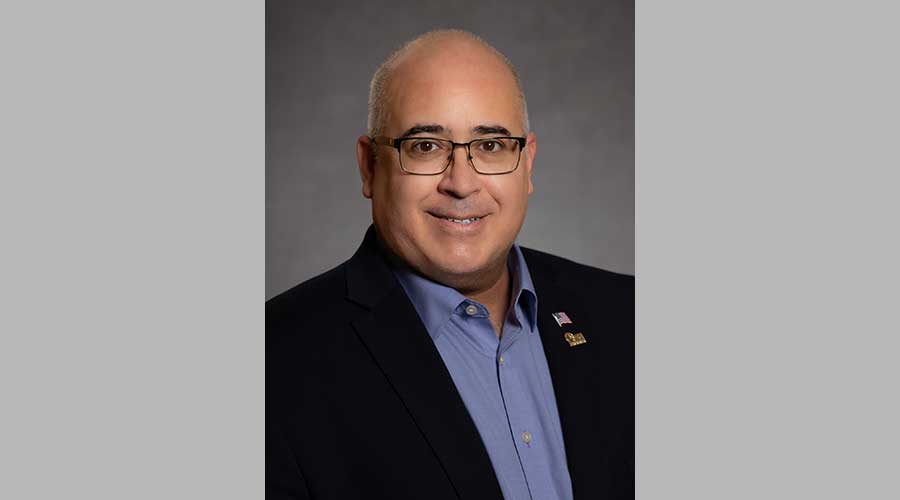Stay updated on news, articles and information for the rail industry
October 2024
Rail News: MOW
From used to useful: Equipment re-use cases in the rail realm

Compiled by Pat Foran, Editor-in-Chief
Rail industry suppliers have a few options when it comes to dealing with their aging equipment. They can hang on to it as long as possible, repairing and refurbishing it along the way. They can put the machinery up for auction. They can sell it on the used market, or for scrap. Or use combinations of all the above.
For example, Omaha Track acquires used railroad equipment such as regulators, spike pullers and tie inserters. From there, crews assess and repair the equipment to ensure it meets “high standards of functionality and safety,” said Gabe Lassek, director of track construction and abandonments, in an email.
“We then integrate these machines into our own production jobs, utilizing them across various projects to ensure operational effectiveness,” he said.
After using the equipment in the field, Omaha Track makes it available for resale.
“Generally, we try and sell the equipment ourselves and avoid auctions,” Lassek said. “Each piece undergoes a rigorous maintenance process to ensure that it performs as reliably as possible. This approach allows us to provide quality, cost-effective equipment to customers while ensuring that the machines have been field-tested and optimized for peak performance.”
If a piece of equipment falls short of expectations, the company might choose to scrap it. But overall, Omaha Track’s “buy-fix-use-sell model” extends the life of railroad machinery and contributes to sustainable practices within the industry, Lassek said.
“By investing in used equipment and giving it a second life, we’re able to offer competitive pricing to customers who are seeking high-quality, reliable machines for their own rail operations,” he said.
For some companies, availability — or lack thereof — of new equipment dictates their approach.
“We keep our vehicles to a certain point in their life cycle, then sell them off,” said Steve Bolte, vice president of business development-North America for Danella Rental Systems, which offers a range of trucks and equipment for railroads, transit authorities, utilities and construction companies. “Because of the differences in getting new vehicles from the OEMs, we might hold onto some over a longer period of time, so we have product to rent.”
Witness medium- and heavy-duty trucks.
“They’ve still got a long lead time on them,” Bolte said. “We’re keeping those longer.”
But Danella officials are “seeing a lightening, an easing up” of the light-duty vehicle market,” Bolte said.
“It’s easier to get new vehicles now in that section, so we’re able to buy newer vehicles,” he said. “The cost on those is going up, as well.”
Danella also sells used assets on its website (https://www.danella.com) via auction. Although the company held its 36th Annual Vehicle and Equipment Auction on June 11-12, Danella’s used cars, trucks, utility and construction equipment are available for purchase via auction all year round.
Meanwhile, at Holland, keeping a fleet of nearly 200 mobile welders operating with an average uptime of 98% annually requires a strategic approach to managing aging units, company officials said. Daily, weekly, monthly and annual maintenance reviews enable Holland to extend equipment life, company officials said.
Also, core components such as the welder head receive complete overhauls based on working hours and weld volume. In recent years, Holland’s equipment management, engineering and operations groups built a fleet replacement and enhancement plan to address aging chassis, gensets and support innovation. The teams identified criteria for key components that can be pulled out of retiring units and refurbished for use in maintenance and new builds.
Replacing aging units also opened the door for new configurations and technologies that provide operators and customers more flexibility.
“We’re welders who design and build our own welding equipment, and that means we have a tremendous opportunity to build on the knowledge and data gathered from our operations,” said Shane Mayhill, Holland’s general manager of welding technology.
Email comments or questions to pat.foran@tradepress.com.
Keywords
Browse articles on used railroad equipment Omaha Track Danella HollandContact Progressive Railroading editorial staff.


 2025 MOW Spending Report: Passenger-rail programs
2025 MOW Spending Report: Passenger-rail programs
 Gardner steps down as Amtrak CEO
Gardner steps down as Amtrak CEO
 Guest comment: Oliver Wyman’s David Hunt
Guest comment: Oliver Wyman’s David Hunt
 Women of Influence in Rail eBook
Women of Influence in Rail eBook
 railPrime
railPrime






